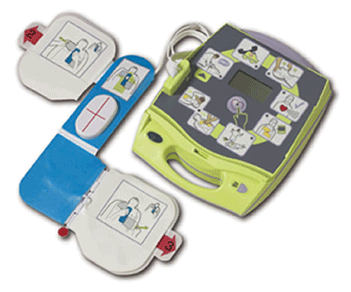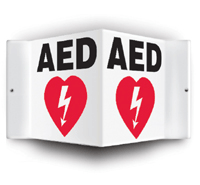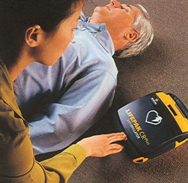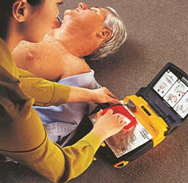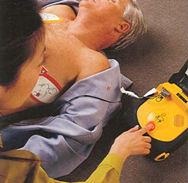An AED (Automatic External Defibrillator) is a small, portable, electronic
device [
show me] which uses
sophisticated electronics to diagnose and analyze a victim's cardiac arrhythmias of ventricular fibrillation
and ventricular tachycardia, determine whether defibrillation is required, and - if necessary - administer an
electric shock to the heart, allowing the heart to re-establish an effective rhythm.
Originally designed for use by non-medical personnel such as officers of the peace, fire fighters, flight attendants, and other
lay rescuers with proper training, there is a growing availability of AED's in public places such as schools, airports,
libraries, health clubs, and even restaurants and cafes. In order to make public AED's easily accesible and immediately
visible they are typically installed in large common areas and are accompanied by a bright
sign [
show me].
Although research has shown AED's to be approximately 95% accurate - that is the nearly unerring ability to properly assess
the need for defibrillation - and most employ multiple safeguards to protect both the victim and the rescuer, fundamental
training, including safety and maintenance, is crucial for effective use.
